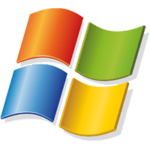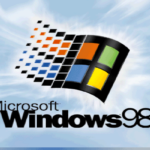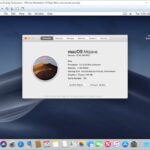Windows 11 is the latest operating system released by Microsoft and many users are loving and enjoying it. While some users are complaining about several issues which they face when using Windows 11 or after upgrading their system from Windows 10 to Windows 11.

When a user is using a system there are various reasons for removing a file or folder from it. There might be several reasons either it could be to free up space or to delete unnecessary files. However, the removal process can be simple until you run into problems with your erased files reappearing.
Some Windows 11 customers also complain about deleted files not appearing in the recycle bin and coming back into their PC. So, let us look at why is this happening and what is the solution to fix the deleted files that keep coming back on Windows 11 issue. Let us begin.
Recommended Post:- How to Download HDMI Video Drivers on Windows 10
Why are deleted files Reappearing on the Computer?
Corrupt system files on the PC are a common reason for deleted files reappearing. Other circumstances that can cause deleted files to reappear on Windows 11 include as follows:
Recycle Bin Error
The Recycle Bin is a trash can that holds temporarily deleted items until they are permanently erased. As a result, if the recycle bin is faulty, deleted files or folders may reappear.
Malware Attacks / Assaults
Malware or viruses might cause problems with your computer’s programs. They can prevent a deleted file from being permanently erased.

Inadequate system permissions
The system permission grants the authority to control certain processes on a computer. If you don’t have the proper permissions, you may encounter this problem when deleting things.
OneDrive sync Failure
If you use the OneDrive cloud storage service, you may encounter problems with deleted files that reappear. Because the deleted files may have been saved on the cloud drive.
Now that we’ve covered the potential causes, let’s look at the solutions.
What can You do if deleted files reappear on Windows 11
Try the following before moving on to more advanced measures:
- Turn on the antivirus service on your computer.
- Restart Windows in Safe Mode and see if you can resolve the problem.
If the problem persists, here are some advanced solutions to consider.
Solution 1: Modify Permissions Settings
- Step 1: Open the File Manager by pressing the Windows + E keys together.
- Step 2: Select the file to be deleted, right-click it, and then select Properties from the enlarged menu.
- Step 3: Navigate to the top-level Security tab, then hit the Advanced option in the bottom right.
- Step 4: Tap the OK button after clicking the Change button next to Owner and typing Everyone in the box.
- Step 5: Return to the Security tab and select Edit.
- Step 6: Navigate to the System Permissions section, select the Allow all permissions checkbox, and then press the OK button.

Changing the file permissions grants the system access to delete and perform other file tasks.
Solution 2: Repair a corrupted Recycle Bin
- Step 1: Select Command Prompt Admin by using the Windows key + X shortcut.
- Step 2: Enter the commands listed below and click Enter: rd /s /q C:\$Recycle. bin
- Step 3: Restart your computer after closing the Command Prompt window.

Check to see if the recycle bin files have returned to your PC after attempting the actions outlined.
Solution 3: Run a Scan using System File Checker (SFC)
- Step 1: Click the Start button, type the command prompt, and then choose Run as administrator.
- Step 2: On the User Account Control prompt, select Yes.
- Step 3: Enter the following text and press Enter: sfc /scannow
- Step 4: Restart your computer to see whether the CPU utilization is still high.

A System File Checker scan will therefore check for and remove faulty system files on your computer.
Solution 4: Delete files using a third-party software
Using the built-in Windows option to delete files may result in the deleted files reappearing on the PC. Users can, however, download and install third-party file-deleting software to more successfully erase files.
Solution 5: Download or Update an Antivirus
Antivirus software can also be used to detect viral attacks on a machine. There are numerous antivirus apps available. You can find the finest antivirus program by visiting top review websites. You should also keep your antivirus software up to date to stay ahead of the various viruses that can infiltrate your machine.
Solution 6: Uninstall Third-Party Cloud Storage and disable cloud synchronization
When a cloud syncing program is the cause of your deleted folder reappearing, this is the answer. This is a serious issue that many people face when using OneDrive on Windows 11.
The best way to remedy the problem is to deactivate the cloud backup service. Uninstall the cloud storage application by following the steps outlined below.
- Step 1: Go to Program and Features. (You may accomplish this by hitting the Windows key + R and typing “appwiz.cpl” into the search box.)
- Step 2: Choose the program for Cloud storage.
- Step 3: Uninstall by right-clicking on it.
- Step 4: To confirm, click the Yes button.
- Step 5: Restart the computer after the removal is complete.
Solution 7: Repair the Damaged Recycle Bin
This is useful when deleted files continually reappear due to a faulty Recycle Bin. To repair it, utilize the built-in command prompt application. Follow the procedures outlined below to complete the process.
- Step 1: Select “Command prompt Admin” by pressing the Windows key + X hotkey.
- Step 2: Input the command “rd /s /q C:$Recycle.bin.”
- Step 3: Exit the Command Prompt window.
- Step 4: Start the computer again.
Solution 8: Delete Using Third-Party Apps
If you are having trouble deleting files using the OS’s built-in option, you should use third-party file-deleting software. There are numerous examples on the market, with the most prominent being File Shredder and Secure Eraser.
Conclusion
Finally, you can read our article on the best Recycle Bin cleansers for Windows 11. You can also learn how to resolve File Explorer deleted files that are still visible on your computer.







